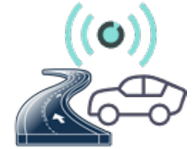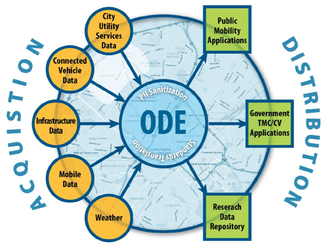 ODE Overview
ODE Overview
ODE: The Scalable, Open Source Solution for Connected Vehicle Data
Welcome to the ODE Program Management & Project Documentation space. |
|---|
Summary Vision Benefits Additional Documents
Summary:
The Intelligent Transportation Systems Joint Program Office’s (ITS JPO) Operational Data Environment (ODE) is a real-time data acquisition and distribution software system that processes and routes data from various connected devices – including connected vehicles, personal mobile devices, infrastructure components, and sensors. The ODE then distributes this data to subscribers, who can use the data to operate real-time applications supporting the operation and maintenance of the transportation system, such as
red-light controls and intersection safety. The system can also be used for related research and development efforts.
Vision:
The vision of the ODE is not only to provide a scalable, data router software system to support the ongoing connected vehicle research efforts – such as the Connected Vehicle Pilot Sites – but also to serve as an open source, open build system with an active group of collaborators who can define and develop its capabilities. This community of collaborators will be able to work with the ITS JPO to ensure the ODE continues to be maintained and that the contributions are high quality and in alignment with software development best practices. This model will ensure the long-term viability of the ODE and has many other benefits including
increased flexibility, superior security, and enhanced customizability.
Benefits:
The ODE will complement connected vehicle infrastructure by brokering, processing, and routing data from various data sources, including connected vehicles, field devices, and transportation management center (TMC) applications. The ODE is the backbone of the connected vehicles data provisioning systems. It is destined and designed to become the information super highway for the Connected Vehicles. Data users include, but are not limited to, transportation software applications, the Research Data Exchange, and the U.S. Department of Transportation’s Situation Data Warehouse.
The ODE can provision data from different data sources to software applications that have subscribed to the ODE. In the other direction, the ODE can accept data from connected vehicle applications and broadcast them to field devices through road side units and the Situation Data Warehouse, which in turn will transmit the data to Sirius XM satellites for delivery to the connected vehicles in the field.
Resources:
| GitHub | Jira | ||
|---|---|---|---|
| GitHub Link | Jira Link |
| Useful Documentation | ||
|---|---|---|


